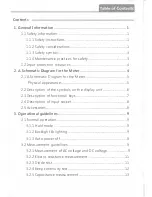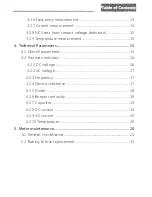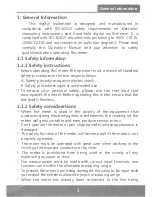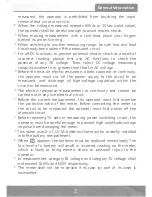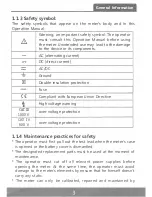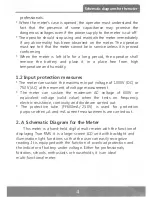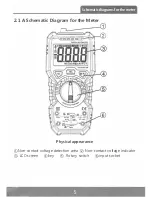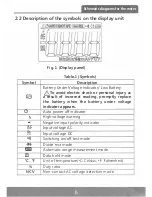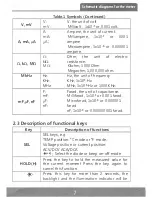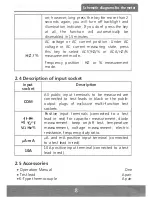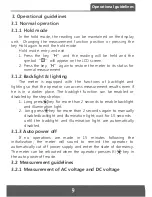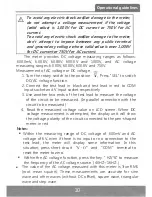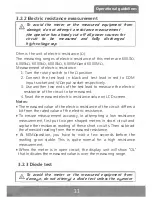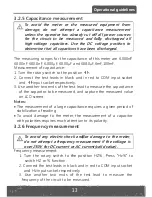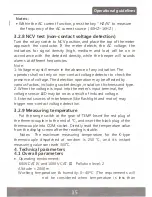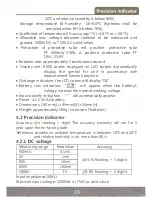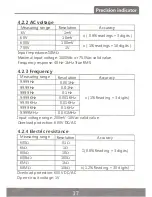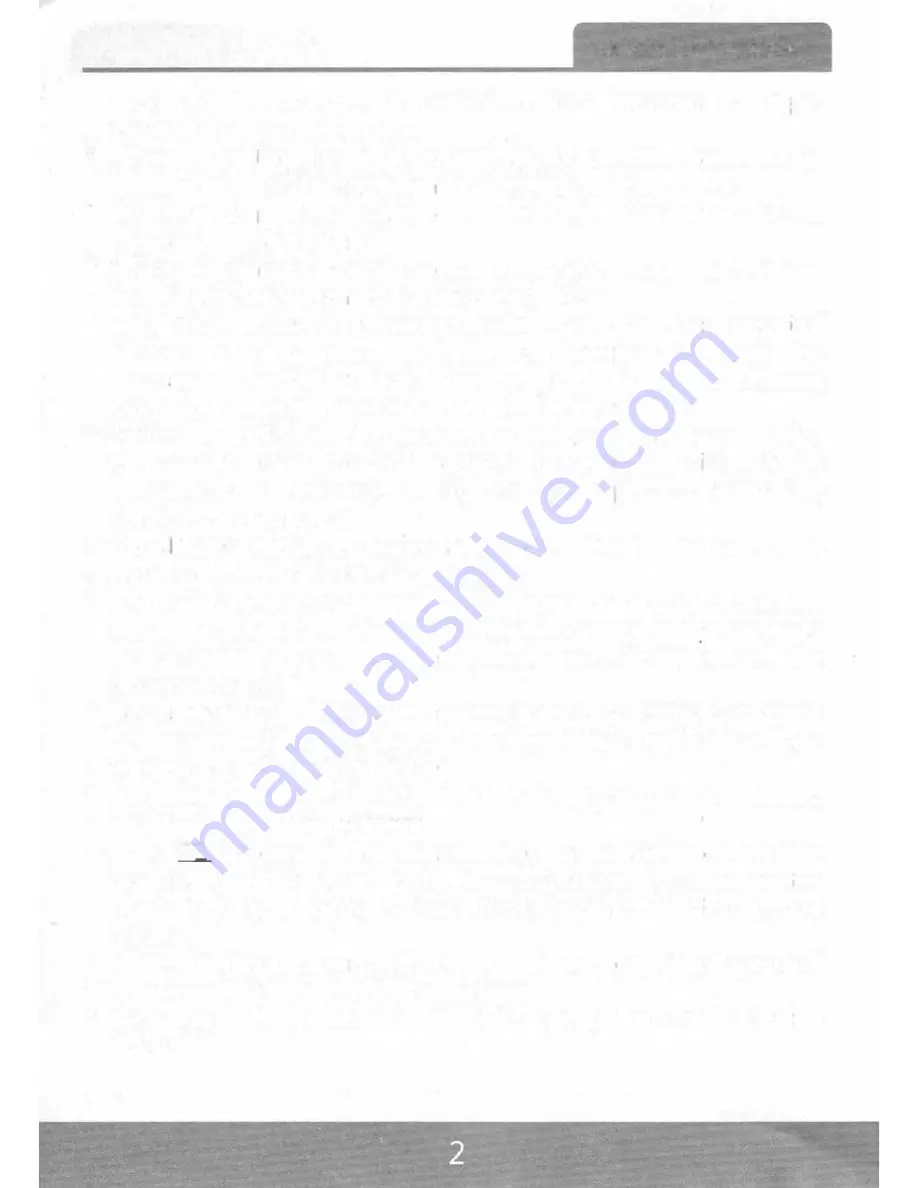
General Information
measured, the operator is prohibited from touching the input
terminal that is not in service.
* When the voltage measured exceeds 60Vdc or 30Vac (valid value),
the operator shall be careful enough to avoid electric shock.
* When making measurement with a test lead, place your fingers
behind its protective ring.
* When switching to another measuring range, be sure that test lead
has already been taken off the measured circuit.
*
For all DC functions, to prevent potential electric shock as a result of
incorrect reading, please first use AC functions to check the
absence of any AV voltage. Then, select DC voltage measuring
range equivalent to or greater than that for AC voltage.
*
Before the tests on electric resistance, diode, capacitor or continuity,
the operator must cut off the power supply to the circuit to be
measured, and discharge all high-voltage capacitors within the
circuit to be measured.
*
The eiectric resistance measurement or continuity test cannot be
carried out in any live electrical circuit.
*
Before the current measurement, the operator must first examine
the protective tube of the meter. Before connecting the meter to
the circuit to be measured, the operator must first power off the
aforesaid circuit.
*
Before repairing TV sets or measuring power switching circuit, the
operator must be careful enough to prevent high amplitude voltage
impulse from damaging the meter.
*
This meter uses 4 x 1.SV AA batteries that must be correctly installed
into the battery compartment.
*
When
F+1
appears, the batteries must be replaced immediately. The
low level of a battery will result in incorrect reading on the meter,
which is likely to bring electric shock or personal injury to the
operator.
*
In measurement, category III voltage and category IV voltage shall
not exceed 1000V and 600V respectively.
* The meter shall not be in service if its case (or part of its case) is
dismantled.
Summary of Contents for FDM18A
Page 26: ...EMC LVD YO 1 04 0154...


